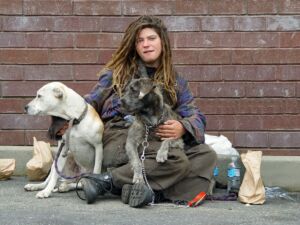News
More young people ending up homeless, says Kirkens Korshær
This article is more than 10 years old.
The number of young homeless people in Denmark has been on the rise since 2009 – a trend that looks set to continue

About half of the young homeless people have a mental disorder (photo: flickr.com/photos/livenature)
A large and growing proportion of Denmark’s homeless population is under the age of 30, claims Kirkens Korshær (church army).
A recent survey conducted by DR2 reveals that out of 33 homeless shelters, 80 percent of them have seen a prominent increase in the number of young homeless in their municipalities. Some 10 percent believe the level to be the same as two years ago, and the other 10 percent are unsure. None of the shelters believe the figures to have decreased.
“We are continually seeing more and more young people in our offer, and it is very sad to see,” Helle Christiansen, the head of Kirkens Korshær, told DR.
Ever-increasing trend
Experts have closely followed the trend since the 2009 SFI homeless census revealed the number of homeless people under 30 to be at an all time high of 1,323. Two years later the number had risen to 1,802, and in 2013 it took another leap to 1,899 people.
According to Lars Benjaminsen, a researcher at the SFI, the national centre for social research, youth homelessness is a serious issue – and an issue that needs to be addressed.
“It is a very extreme form of marginalisation for a young person to be in so early in life, and that is something that can pursue these kids for years to come,” he explained to DR.
Statistics also show that a large proportion of the young homeless population – about half – are further challenged by having some kind of mental disorder.
The SFI homeless census is published once every two years, but while the count for 2015 has been completed, the results are yet to be published.
Couch-surfing craze
However, not all the young people present at shelters are homeless, explains Benjaminsen. A large number are in fact what is referred to as couch-surfers – individuals who choose to temporarily stay on the couches of family and friends.
“Some of these young people couch-surf so often that they eventually deteriorate their social network and have to resort to hostels or homeless shelters,” said Benjaminsen.
Youth homelessness a widespread issue
According to Kirkens Korshær, the growing group of young homeless is not a phenomenon limited to Copenhagen and other major cities.
“There are few places where the trend is not seen. It is not just in the big cities,” noted Christiansen. “Sadly, youth homelessness is widespread in Denmark.










































